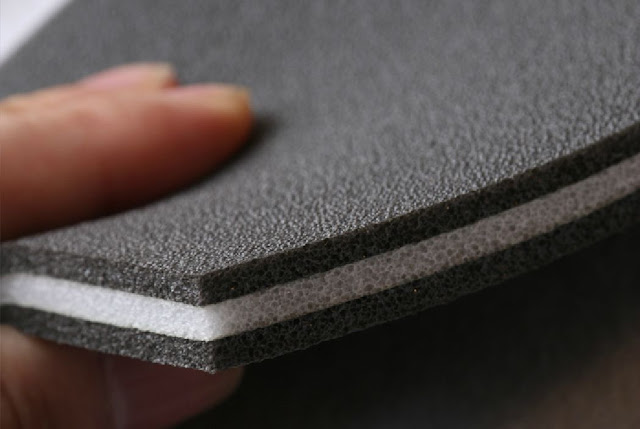Innovating Sustainability: Metal Organic Framework Market Trends and Strategic Analysis
 |
| Metal Organic Framework Market |
The Metal Organic Framework Market refers to the industry
segment focused on the production, application, and development of
metal-organic frameworks (MOFs). These are porous materials with a high surface
area, constructed from metal ions or clusters connected by organic ligands.
MOFs find diverse applications in areas such as gas storage, catalysis, drug
delivery, and environmental remediation.
Global Metal Organic Framework Market is expected to reach US$ 1,398.5 Mn by 2031, from US$ 640.6 Mn in 2023, exhibiting a CAGR of 11.8% during the forecast
period.
Market Key
Trends:
Several key trends are shaping the Metal
Organic Framework Market. Firstly, there is a growing focus on sustainable and
eco-friendly materials, leading to increased research and development in MOFs
for applications such as carbon capture and storage (CCS) and water
purification. Secondly, advancements in MOF synthesis techniques and
scalability are driving market growth by enabling the production of MOFs on a
commercial scale. Additionally, the exploration of novel MOF structures and
functionalities is expanding the potential applications of these materials.
Key
Players:
Key Players operating in Metal Organic Framework Market are BASF,
Strem Chemicals, MOF Technologies, MOFapps, NovaMOF, MOF Technologies India,
ACSYNAM, Framergy, Inc., MOFgen Ltd., MOFworx, zbMATH, Avantama, Sigma-Aldrich,
TCI Chemicals, Greenwich Molecular Associates, Novochem, micromeritics, Reinste
Nanoventures, NUMAT Technologies.
Porter
Analysis:
Supplier
Power: Supplier power in the Metal Organic Framework Market is
moderate. While there are several suppliers of MOF materials and technologies,
the market is characterized by ongoing research and development, leading to the
emergence of new suppliers and innovative solutions. Supplier differentiation
based on material properties, production methods, and application expertise
influences supplier power.
Buyer
Power: Buyer power in the Metal Organic Framework Market varies
based on factors such as market demand, product customization requirements, and
competitive pricing. Buyers with significant demand volumes and specific
application needs may have higher bargaining power, especially in customized
MOF solutions. However, market competition and technological advancements can
influence buyer decisions.
Competitive
Rivalry: Competitive rivalry in the Metal Organic Framework Market is
intense, driven by factors such as technological innovation, market demand
diversity, and industry collaborations. Key players compete based on product
differentiation, performance characteristics, cost-effectiveness, and market penetration
strategies. Market consolidation and strategic alliances are common in this
dynamic market landscape.
Threat of
Substitutes: The threat of substitutes in the Metal Organic Framework
Market is relatively low, given the unique properties and functionalities of
MOFs in various applications. Alternative materials may exist for specific
functions, but MOFs offer advantages such as tunable porosity, high surface
area, and selectivity, making them preferred choices in many sectors.
Threat of
New Entrants: The threat of new entrants in the Metal Organic Framework
Market is moderate. Entry barriers include technological expertise in MOF
synthesis and characterization, intellectual property considerations,
regulatory compliance, and capital investment for production scale-up.
Established players with patents, market experience, and R&D capabilities
have a competitive advantage.
Geographical
Regions:
The Metal Organic Framework Market is segmented
geographically into regions such as North America, Europe, Asia Pacific, Latin
America, and the Middle East and Africa. Each region presents unique
opportunities and challenges influenced by factors such as research funding,
industrial collaborations, regulatory frameworks, market demand, and
technological adoption. Market players often tailor strategies based on
regional market dynamics and customer preferences.
Segment
Analysis:
The Metal Organic Framework Market can be segmented based on
application areas such as gas storage, catalysis, drug delivery, sensors, and
environmental applications. Each segment has distinct market drivers, growth
potential, and competitive landscapes. For instance, the gas storage segment
benefits from the increasing demand for clean energy solutions and hydrogen
storage technologies, driving the adoption of MOFs with high gas adsorption
capacities. Similarly, the catalysis segment sees growth opportunities in
sustainable chemical processes and green chemistry initiatives, where MOFs
offer catalytic efficiencies and selectivity advantages. Overall, segment
analysis helps identify niche markets, target customer needs, and develop
focused strategies for market penetration and expansion.



Comments
Post a Comment